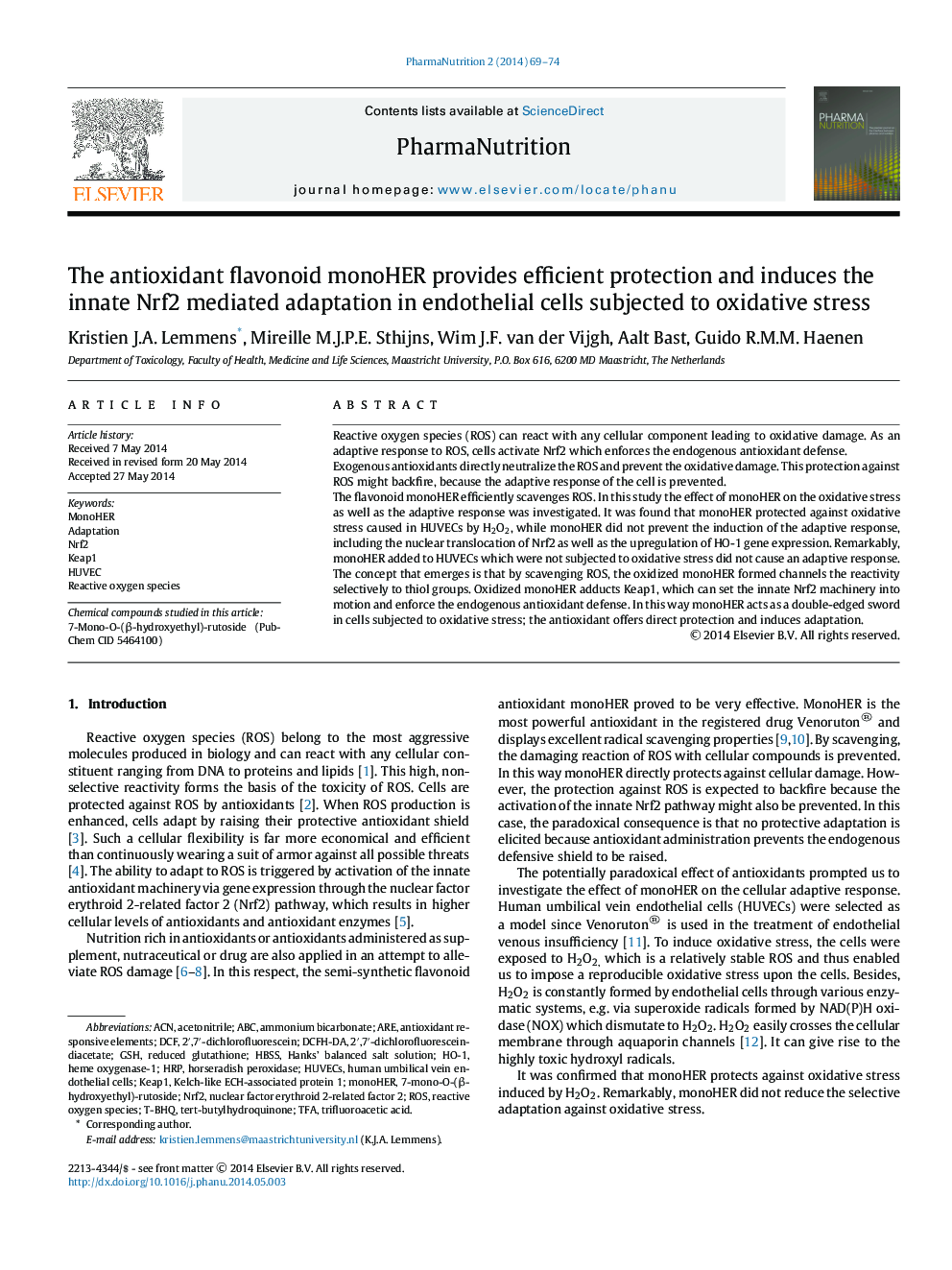| Article ID | Journal | Published Year | Pages | File Type |
|---|---|---|---|---|
| 2564435 | PharmaNutrition | 2014 | 6 Pages |
•H2O2 causes oxidative stress in HUVECs but adapts the cells by raising the antioxidant shield to withstand new assaults.•MonoHER efficiently protects HUVECs against the oxidative stress caused by H2O2 but remarkably does not affect the adaptation.•The preservation of the adaptation by monoHER was due to selectively directing the thiol reactivity to Keap1.
Reactive oxygen species (ROS) can react with any cellular component leading to oxidative damage. As an adaptive response to ROS, cells activate Nrf2 which enforces the endogenous antioxidant defense.Exogenous antioxidants directly neutralize the ROS and prevent the oxidative damage. This protection against ROS might backfire, because the adaptive response of the cell is prevented.The flavonoid monoHER efficiently scavenges ROS. In this study the effect of monoHER on the oxidative stress as well as the adaptive response was investigated. It was found that monoHER protected against oxidative stress caused in HUVECs by H2O2, while monoHER did not prevent the induction of the adaptive response, including the nuclear translocation of Nrf2 as well as the upregulation of HO-1 gene expression. Remarkably, monoHER added to HUVECs which were not subjected to oxidative stress did not cause an adaptive response.The concept that emerges is that by scavenging ROS, the oxidized monoHER formed channels the reactivity selectively to thiol groups. Oxidized monoHER adducts Keap1, which can set the innate Nrf2 machinery into motion and enforce the endogenous antioxidant defense. In this way monoHER acts as a double-edged sword in cells subjected to oxidative stress; the antioxidant offers direct protection and induces adaptation.
Graphical abstractFigure optionsDownload full-size imageDownload as PowerPoint slide
